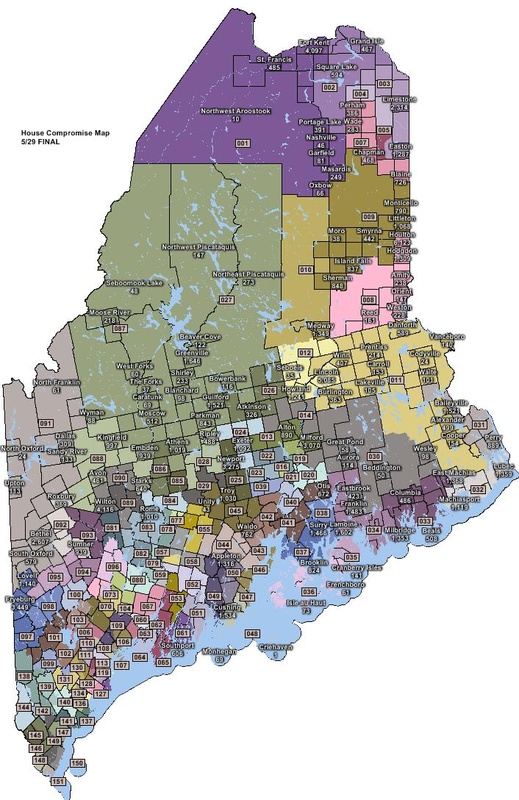AUGUSTA – New maps for Maine’s 186 legislative districts have been approved unanimously by the bipartisan Maine Redistricting Commission, paving the way for likely approval in the House and Senate.
The redistricting plan approved Friday, based on 2010 census data, would make modest changes from the existing plan. Democrats and Republicans are billing it as a compromise.
The data show that Maine’s population centers grew significantly while rural areas lost population. For examples, population shrank by 3.2 percent and 2.8 percent, respectively, from 2000 to 2010 in Washington and Aroostook counties, while it grew in Cumberland County by 6 percent, exceeding the state average of 4.8 percent.
That urban-rural divide shows in many of the maps for House and Senate districts. For example, Senate District 6 in Cumberland County, represented now by Democrat James Boyle of Gorham, would lose part of populous Westbrook but gain Buxton, in York County.
Rural Senate District 35 in Aroostook County, now represented by Assistant Majority Leader Troy Jackson, D-Allagash, would grow by gaining Ashland, a town of more than 1,200.
According to a news release from the office of House Speaker Mark Eves, D-North Berwick, the ideal House district size is 8,797 residents and the ideal Senate district is 37,953.
As proposed in the maps, the 151 House districts and 35 Senate districts would be within 5 percent of those ideal sizes.
“The maps are a fair and deliberate compromise that we believe is in the best interest of the state of Maine,” said Sen. Emily Cain, D-Orono, a commission member, in a prepared statement. “This compromise bodes well for the vote in the House and Senate.”
The Maine Constitution says the redistricting needs approval by two-thirds votes in the House and Senate by June 11.
If it falls short, the proposal is sent to the Maine Supreme Judicial Court for resolution.
According to a 2010 guide from the Brennan Center for Justice at the New York University School of Law, only Maine and Connecticut required two-thirds votes by their legislatures to adopt redistricting. Maine was then one of 37 states that gave their legislatures power over redistricting, and one of only five states that appointed commissions to advise lawmakers.
Many states are known for partisan battles over redistricting.
Maine doesn’t have such a reputation, but there have been stalemates in the Legislature.
The last time the lines were drawn, in 2003, the Legislature didn’t approve the state Senate and congressional districts by its deadline. In July of that year, the court issued the plans.
Rep. Matthew Pouliot, R-Augusta, a commission member, said avoiding a court battle would be a victory in itself.
“There was definitely give and take on both sides,” he said. “It was really rewarding to be a part of a group that could come up with a compromise.”
Michael Shepherd can be contacted at 370-7652 or at:
mshepherd.mainetoday.com
Twitter: @mikeshepherdme
Send questions/comments to the editors.



